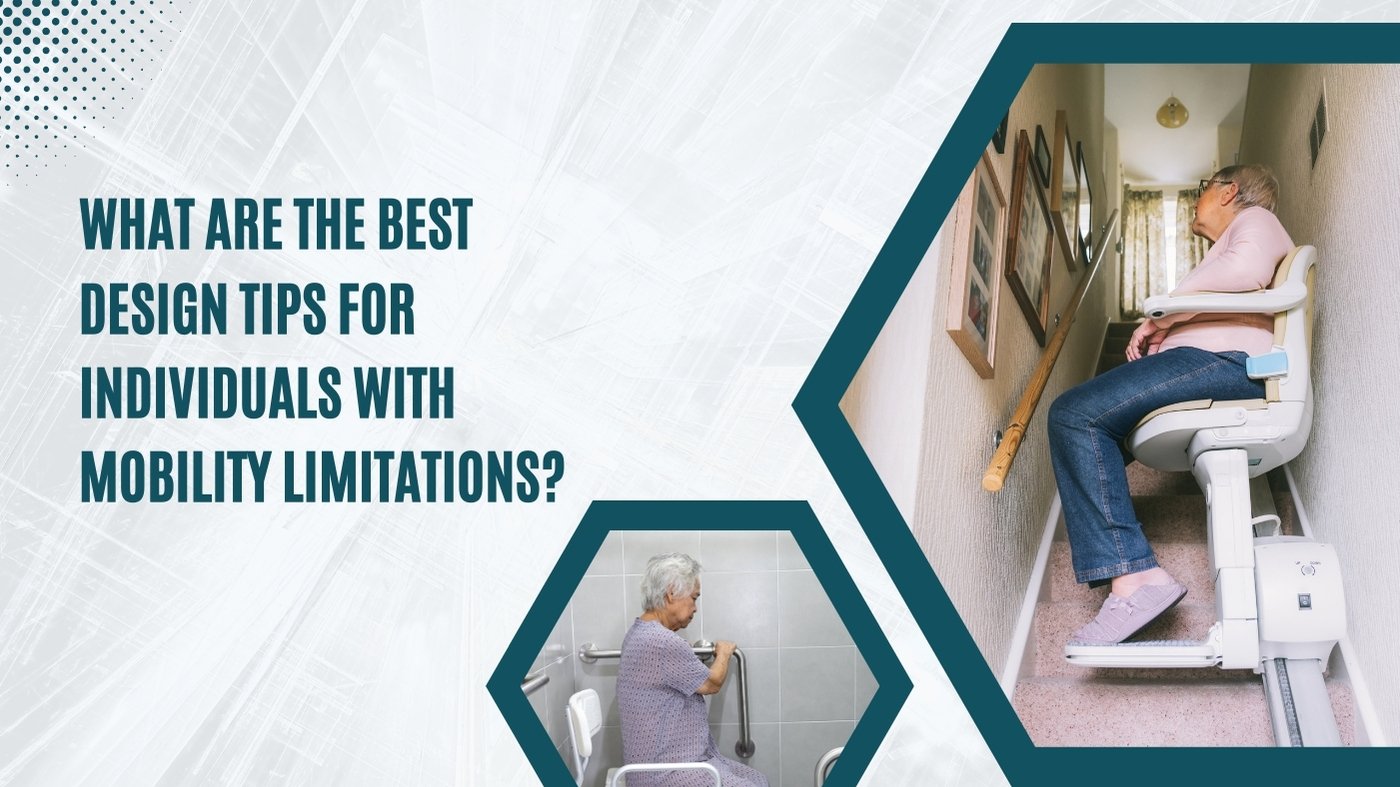Creating a home that is accessible for individuals with mobility challenges is crucial for promoting independence and overall well-being. As people age or encounter mobility issues, it’s important to modify their living spaces to make daily life easier and safer. This not only helps them move more freely but also reduces the likelihood of accidents. Acknowledging these challenges is key to planning a home that addresses specific needs.
Understanding Mobility Challenges
- Physical Barriers: Inaccessible features such as stairs, narrow doorways, and curbs can severely limit the mobility of individuals with impairments. Additionally, public spaces without elevators or ramps restrict access to essential locations, further reducing independence.
- Environmental Conditions: External factors like extreme weather, poor road conditions, or uneven pavements can make mobility even more difficult. Snow, rain, or intense heat can exacerbate these challenges, making movement potentially hazardous.
- Health Conditions: Conditions such as arthritis, muscular dystrophy, or aftereffects of a stroke can greatly hinder movement. Symptoms like joint pain, chronic pain muscle weakness, fatigue, or limited range of motion can make everyday tasks like walking or climbing stairs incredibly difficult.
- Social Stigma and Isolation: People with mobility challenges often face discrimination or exclusion, which can result in social isolation. Lack of awareness regarding their needs can hinder relationships and reduce participation in social or community activities.
- Technology and Mobility Aids: Modern mobility aids, like electric wheelchairs, scooters, and robotic exoskeletons, have vastly improved independence for many. However, these devices can be costly, and not everyone can access them due to financial or insurance limitations.
- Barriers at Work and School: Many workplaces and educational institutions are not fully accessible. Without necessary accommodations such as ramps, accessible desks, or restrooms, individuals may struggle to perform tasks or attend their jobs or classes regularly.
- Psychological Impact: Daily challenges due to mobility issues can have a significant emotional toll, leading to conditions like depression and anxiety. The frustration of losing independence can contribute to mental health struggles.
Key Areas for Improving Accessibility
- Entrances and Exits: Ensure that doorways are wide enough for wheelchairs or walkers. Installing ramps instead of stairs and adding adequate lighting can help prevent accidents and provide easier access.
- Hallways and Passageways: Keep corridors wide and free of obstacles to ensure easy movement. Using non-slip flooring also minimizes the risk of falls.
- Staircases and Elevators: If stairs are unavoidable, adding handrails or even a stairlift can help. For multi-story homes, consider installing an elevator for greater ease.
Bathroom Accessibility
- Shower Accessibility: Roll-in showers with non-slip flooring and grab bars provide stability and prevent accidents.
- Toilet Adjustments: Raised toilet seats or wall-mounted toilets offer better accessibility for wheelchair users and reduce physical strain.
- Sink Accessibility: Wall-mounted or pedestal sinks provide clearance for wheelchair users, making it easier to approach and use the sink.
- Grab Bars: Install grab bars near toilets and in showers for added support and safety.
Kitchen Modifications for Mobility
- Counter Height: Lowering countertops to an accessible height allows wheelchair users to comfortably reach all areas of the kitchen, making meal preparation easier.
- Cabinet Accessibility: Installing pull-out shelves or drawers helps eliminate the need for bending or stretching to retrieve kitchen items.
- Appliance Placement: Positioning ovens, microwaves, and other appliances at accessible heights reduces the need to reach or bend, improving safety and comfort.
- Flooring: Non-slip flooring, such as ceramic tile or hardwood, ensures stability and reduces the risk of falls in the kitchen.
Smart Home Solutions for Enhanced Accessibility
- Voice-Controlled Devices: Voice-activated assistants can help control lights, thermostats, and other home devices, reducing physical strain.
- Automated Systems: Use automated lighting and temperature systems that adjust to your lifestyle, making it easier to manage home settings.
- Smart Appliances: Appliances like smart ovens or refrigerators, controlled remotely or via voice commands, improve convenience and safety.
- Security Systems: Smart security systems with cameras and sensors can be monitored and controlled remotely, offering peace of mind.
For individuals using prosthetics, integrating these smart technologies with prosthetic devices can further boost independence. A reliable prosthetics limb supplier in Jaipur provides high-quality products tailored to personal needs, enhancing mobility and comfort.
Personalizing Your Space for Comfort
- Personalized Decor: Incorporating personal items and colors that reflect individual preferences helps create a welcoming and comfortable environment. Ensure decorative pieces are within easy reach and secured to avoid accidents.
- Comfortable Furniture: Choose furniture with adequate lumbar support and sturdy armrests to help with standing and sitting, fostering independence.
- Lighting: Sufficient and adjustable lighting throughout the home reduces the risk of falls and enhances visibility. Consider adding dimmer switches for flexibility.
- Storage Solutions: Utilize pull-down shelves, easy-grip handles, and open shelving to ensure that storage is accessible. Proper organization and labeling make it easier to find and retrieve items, promoting order and independence.
Enhancing Independence and Comfort
Creating an accessible and comfortable home is crucial for individuals with mobility challenges. By addressing physical barriers, modifying key areas such as entrances, bathrooms, and kitchens, and integrating smart home technologies, you can enhance mobility and reduce the risk of accidents. Thoughtful decor and customized furniture also play a role in creating a safe, functional, and personalized living space.
With the right modifications, individuals with mobility challenges can experience greater freedom, improved quality of life, and increased social engagement. By considering these essential changes, we can ensure that everyone has the ability to live with dignity, comfort, and independence.





